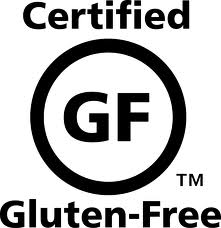A Heart -to-Heart Chat About…
Your Gluten Intolerance
I wrote this article as This is Part 2 in a series on the gluten-free conversation, but it fits so nicely in with our Heart to Heart articles that we are bringing it in from the archives. Today, we will look at the categories and common progression of this current cultural phenomenon called “gluten-intolerance”. Let’s identify the stages of gut dis-ease that lead to more serious complications and even life-threatening disorders:
Stage 1) Healthy gut with great digestion, plenty of probiotics, healthy immune system, good hydration with clean, oxygenated water, stable emotions, regular bowel habits, low-to-no stress in the lifestyle, clear skin, stable weight and balanced hormones.
Stage 2) Standard American (Westernized) Gut – consumes large quantities of breads, pasta, grains of all kinds (whole or processed), sodas, stimulants, very little water intake, either very little or excessive exercise. Weight may be stable or fluctuating; hormones are not age appropriately healthy and stable but instead are in line with “cultural norms”.
Over time, as age progresses and lifestyle deteriorates, stress increases, gut permeability increases, bowel habits get less and less effective and immune system begins to breakdown. Signs include illnesses from colds and acne to infertility and high cholesterol. Weight begins to gather in mid-section, hormones begin to be more and more symptomatic. Gluten Sensitivity has begun with signs of gas, bloating, swelling, irritability, skin problems, hair loss, bad breath, and other “minor” signs of food allergy to grains. Acid reflux is often a problem. For most, diabetes and heart disease are on the horizon.
Simple gluten sensitivity is used to describe those patients who cannot tolerate gluten and experience symptoms similar to those with celiac disease but yet who lack the same antibodies and intestinal damage evidenced in celiac disease. Many see this as an “innate immune response”, as opposed to an “adaptive immune response” or allergic reaction. This simply means… you aren’t that bad yet but you are on the road. The body will eventually adapt to survive however it has to do so.
People with this stage of gluten sensitivity exhibit many extra-intestinal or non-GI symptoms, such as headache, “brain-fog”, and joint pain. Symptoms typically appear hours or days after wheat or other grains have been ingested.
Patients with simple gluten sensitivity would not test positive for celiac disease based on blood testing, nor do they have the same level or type of intestinal damage found in individuals with celiac disease. Patients do tend to have other seemingly non-related allergies at this stage, which often masks the underlying problem with grains. Some individuals may experience minimal intestinal damage but find this goes away with a GRAIN-free diet. (We will address the difference in the next article, so stay with us!)
Stage 3) Advanced acid reflux disease, GERD, and other digestive distress progresses to regular bouts of constipation and/or diarrhea, Crohn’s, Irritable Bowel Syndrome, Chronic Fatigue, Fibromyalgia, PMS, PMDD, gall-bladder attacks and stones, kidney stones, and the dreaded… middle age belly fat. This stage is generally termed “gluten-intolerant”. Inflammatory diseases like heart disease, arthritis, and even rheumatoid arthritis can begin to develop at this stage.
At this stage the patient is experiencing some intestinal permeability but not yet to the level that is characteristic of celiac disease. Increased intestinal permeability permits toxins, bacteria and undigested food proteins to seep through the GI barrier and into the bloodstream. This has been termed in our offices and other leading-edge health care clinics for years as “leaky gut” syndrome.
Leaky gut is the source of many of the associated symptoms listed in this stage of the progression. It is an early biological change that comes before the onset of several autoimmune diseases. Symptoms here can be pain, inflammation, nausea, headaches, allergies, burning in the abdomen after certain foods or drinks, and general fatigue. Pain the digestive area is often severe enough to cause the patient to think they are having a heart attack.
Stage 4) True, diagnosable celiac disease, also known as advanced or absolute gluten intolerance, while medically labeled a genetic disorder, is in fact almost always an acquired immune deficiency as a result of too many grains in the diet and too little nutrition to heal at a cellular level. An absence of good fats to heal the GI tract is a critical factor at this stage, as is a gross deficiency in minerals, probiotics, and adequate sleep.
Sometimes detected in young teens or children, these deficiencies can be present in the mother and thereby passed on to the developing child, which if severe enough will result in the appearance of a genetic disorder, which actually was inherited both physically because of deficiency and familiarly through adoption or induction into poor family eating and coping habits.
So there you have it, the progression of a simple over-indulgence of man-engineered and processed foods, all the way to the body’s adaptation into a full-blown, life-threatening auto-immune disorder.
Does anything described in the stages above sound familiar? Research suggests that some form or some level of this growing concern affects at least 1 in 133 Americans.
Again, symptoms of gluten-sensitivity, grain-allergies, gluten or grain intolerance, and/or celiac disease can range from the classic features, such as diarrhea, mild weakness, bone pain, and belly pain, to chronic diarrhea, abdominal bloating, initial weight gain, and in severe cases, eventually, progressive and dangerous weight loss.
In an article published by NaturalNews.com there are listed six common symptoms as a quick guide to evaluating potential gluten intolerance:
(1) Obviously, there are gastrointestinal (GI), stomach, and digestive problems. These can include one or some of the following: Gas, bloating, queasiness, abdominal cramping, constipation, diarrhea, or an alternating combination of both – IBS (Irritable Bowel Syndrome).
(2) Headaches and/or migraines.
(3) Fibromyalgia is not a disease, it’s a syndrome. Getting a medical diagnosis is bogus. You don’t need to be told you have muscular and connecting tissue aches and pains. That’s what fibromyalgia means. Fibro= Connective Tissue; Myo= Muscle; Algia= Pain. Thus fibromyalgia.
(4) Emotional issues involving chronic irritability and sudden, irrational mood shifts.
(5) Neurological issues, including dizziness, difficulty balancing, and peripheral neuropathy affecting nerves outside the central nervous system and resulting in pain, weakness, tingling or numbness in the extremities.
(6)Fatigue, whether chronic or almost after every meal. Chronic fatigue syndrome (CFS) is, like fibromyalgia, a syndrome, not a disease. If that’s what you’re diagnosed with, it means your doctor can’t locate the cause of your fatigue.
It’s a serious topic. And, the symptoms are not to be taken lightly, as studies have shown that if a person with advanced celiac disease continues to eat gluten, he or she will increase their chances of gastrointestinal cancer by a factor of 40 to 100 times that of the normal population.
So, with all of this abundant information published all over the internet, should more of us really consider eating gluten-free, jumping on the bandwagon with Oprah and other celebs and prominent TV Doctors touting the wonders of gluten-free foods?
The symptoms and statistics sure seem to suggest we should.
But think again!
(Yes, it is passed my bedtime and I am failing to resist the urge to say it… “You know everything you read on the internet is true! … Right, he really is a French fashion model…)
Most of you, our regular readers, might have guessed that already… this is definitely one time we advise you to break ranks and refuse to be swept up in this disease or the deception surrounding it!
Coming up in our March Madness series in the next couple of weeks, we will answer… “Why NOT Gluten-free?” I hope you will be with us all next month as we conquer some more mountains on our journey to complete health!
 Michelle Pearson is a dynamic wellness coach, speaker, author, and the Founder & President of Picture of Health Inc. (http://thepictureofhealth.com. On a personal health journey for the past 21 years, Michelle’s mission is to educate, activate, challenge and equip others to live a full, satisfying life through the use of state-of-the-art educational resources to produce significant and lasting health breakthroughs.
Michelle Pearson is a dynamic wellness coach, speaker, author, and the Founder & President of Picture of Health Inc. (http://thepictureofhealth.com. On a personal health journey for the past 21 years, Michelle’s mission is to educate, activate, challenge and equip others to live a full, satisfying life through the use of state-of-the-art educational resources to produce significant and lasting health breakthroughs.
Dr. Ray Pearson is a licensed Chiropractic Physician and a Pharmacist, with over 45 years in healthcare. Dr. Ray has post-graduate training and certification in numerous advanced wellness therapies and Chiropractic techniques. Dr. Pearson and wife, Michelle, have more than 1000 hours of continuing education in advanced nutrition and wellness topics.
- Great Faith Adventures - August 15, 2020
- Great Faith Adventures – Video Gallery - March 10, 2018
- 2016 Annual Year End Ministry Report - February 4, 2017

